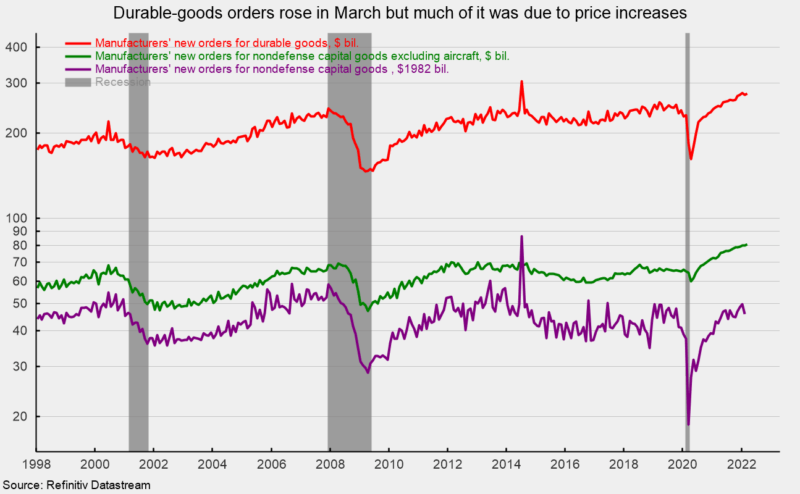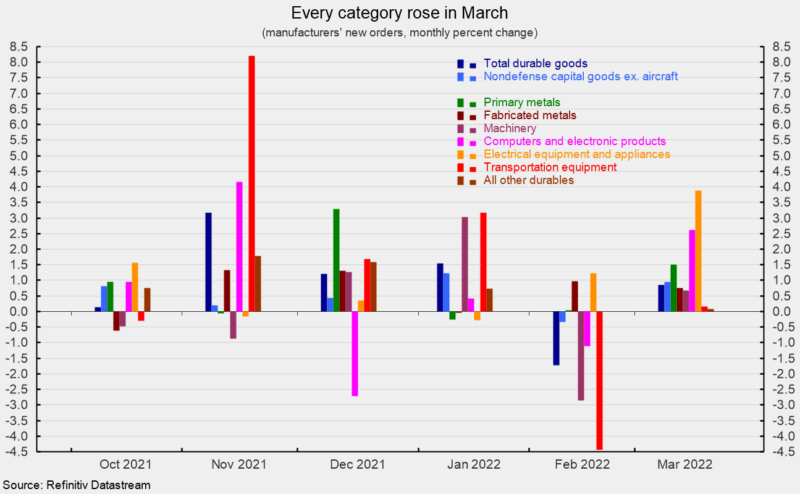Durable-goods Orders Posted a Broad-based Rebound in March
New orders for durable goods increased 0.8 percent in March, rebounding from a 1.7 percent drop in February. Total durable-goods orders are up 11.9 percent from a year ago. The March gain puts the level of total durable-goods orders at $275.0 billion, the third highest on record (see first chart).
New orders for nondefense capital goods excluding aircraft, or core capital goods, a proxy for business equipment investment, jumped 1.0 percent in March after falling 0.3 percent in February. Orders had risen for 11 consecutive months from March 2021 through January 2022 and have increased 21 of the last 23 months since April 2020. The results put the level at $80.8 billion, a new record high (see first chart).
However, accelerating price increases have an impact on capital goods. In real terms, after adjusting for inflation, new orders for nondefense capital goods were $45.9 billion in February, measured in 1982 dollars, a high level by historical comparison but well shy of the record high (see first chart). Producer prices for consumer durable goods rose 0.7 percent in March while producer prices for capital equipment rose 0.8 percent, suggesting that in real terms, new orders for durable goods were roughly flat while real new orders for nondefense capital goods excluding aircraft rose a modest 0.2 percent.
Every category in the durable-goods report showed a gain in March. Among the individual categories, electrical equipment and appliances led with a 3.9 percent increase, followed by computers and electronic products with a 2.6 percent rise, primary metals with a 1.5 percent gain, fabricated metal products, up 0.8 percent, and machinery orders, up 0.7 percent. Transportation equipment added 0.2 percent with motor vehicles and parts up 5.0 percent, but nondefense aircraft was down 9.9 percent, and defense aircraft plunged 25.6 percent (see second chart). From a year ago, every major category shows a gain.
Durable-goods orders continue to be strong, particularly the core-capital goods components, though some of the gain in nominal-dollar orders is due to price increases. Demand remains robust for the manufacturing sector, and the tight labor market creates incentives to substitute capital for labor. The pandemic may have accelerated structural changes to the economy, affecting labor, housing, manufacturing, and services.
However, the outlook remains uncertain. Sustained upward pressure on prices continues with demand outpacing supply. Labor and materials shortages continue to hamper production and the Russian invasion of Ukraine has unleashed a wave of volatility and disruptions to the global economy. Furthermore, the Federal Reserve has begun an interest rate tightening cycle boosting the probability of a policy mistake. Caution is warranted.







